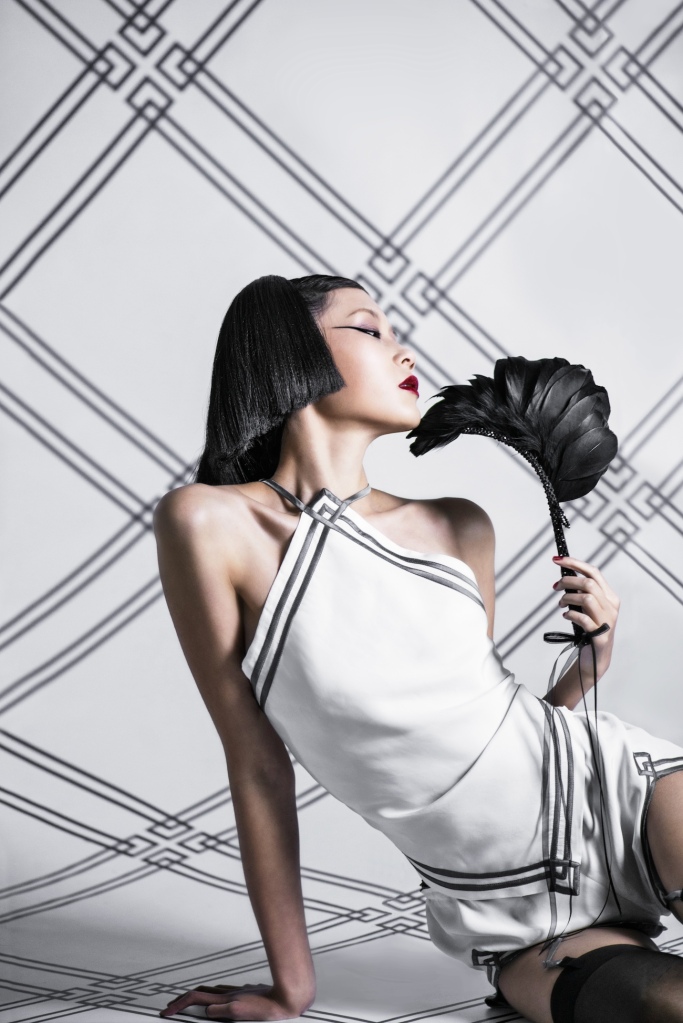I see the term luxury tossed around for pretty much everything these days, as has The Lingerie Addict. Figleaves calls its vast library of clothes and foundations luxury, when they carry some low-cost brands. Huh? What does that mean, I asked?
Economically speaking, luxury goods are high markup and high prestige. The designer label is important. Some of them are veblem goods, meaning that demand for them is proportional to a high price, which contradicts the law of demand. Humans have funny psychology concerning prestige, exclusivity, and quality, and how they relate to our self-worth. Conspicuous consumption is desired or commended in many social circles or circumstances no matter our income bracket. In the United States, both ‘luxury’ and ‘middle class’ have become stretchy terms. Several models agree that ‘middle class’ means at least some level of college. I’ve heard the term apply to adults whose personal income is anywhere between $30,000 to $200,000 annually. Cost of living varies widely across the country, but I think the idea is to indicate some financial security. However, there are many smart, college educated people working full-time or more and living month-to-month.
The Baby Boomers (and probably earlier Americans) that had lived in the United States for more than a generation tended to have material goods of consistent grade. If you had hand-me-down furniture, chances were you didn’t eat out much unless it was fast food, wore hand-me-down clothing, went to public schools, and if you had a car, drove a small Chevy, GM, or Ford (before the nineties Japanese cars had high tariffs) and kept it until it stopped working. If you were ‘comfortable’, you probably had had decent quality furniture, some technological gadgets, maybe some music or dance lessons or sports for the kids, a mid-size or minivan, and went out to dinner once a week. If you were more than comfortable, my impression is everything in your house was supposed to be expensive unless it had sentimental value.
Today, many young people are opting to ‘trade up.’ Within our budgets, we choose what’s emotionally important to us and invest proportionally more in that good or service and cut on other things. A well-to-do person can have a smartphone, a Roomba, a semi-pro camera, two computers and a tablet, a big entertainment center…and IKEA furniture and no pants that cost more than $30. Another person might take singing lessons, nice audio speakers for the home, $80 bras, and share a place with many roommates, get $20 haircuts, and always brew their own coffee which they bought at the grocery store instead of stopping in a coffee shop.
This applies to lingerie buying as well. You can buy Parfait by Affinitas, Lepel, Pour Moi? and sale lingerie most of the time (or just not have a ton of bras) to save for one Angela Friedman or Christine (often considered luxury) piece. Or like the person above, spend money on pricier bras and have roommates who may hate you. Many people who wear lingerie are on a budget. I tend to buy big brand bras, underpants from $8-20, and simple chemises, pajamas, and loungewear. I go for variety rather than mega high end garments in my bra drawer. (One could argue that the Masquerade bras are high end, but $80 rather than $60 does not seem to be super luxe to me compared to La Perla, Agent Provocateur, Lise Charmel…)

This year was the first time I indulged in made-to-measure (often considered a luxury) lingerie: pieces from Pillowbook: two dudou, a pair of pants, and slip. I’m super impressed and love the results (more on that in future posts). However, I feel like buying luxury/couture will not become a regular habit. I’m not a fashionista and regular offerings from the Eveden group, Panache, Parfait, Hanky Panky, Wacoal, and Josie satisfy me most of the time.
What are your priorities when buying lingerie? Do you get a few expensive items, or a larger quantity of economical ones? Do you put aside money in case something you dream of comes to light, or is there a special something you’re saving up for?
